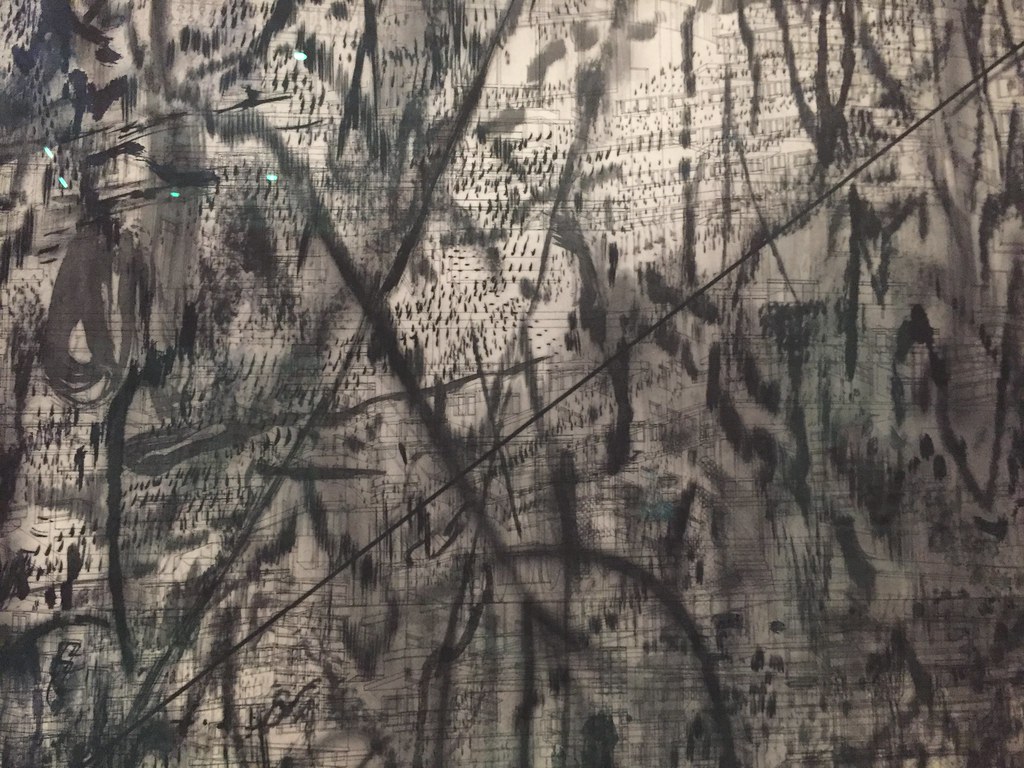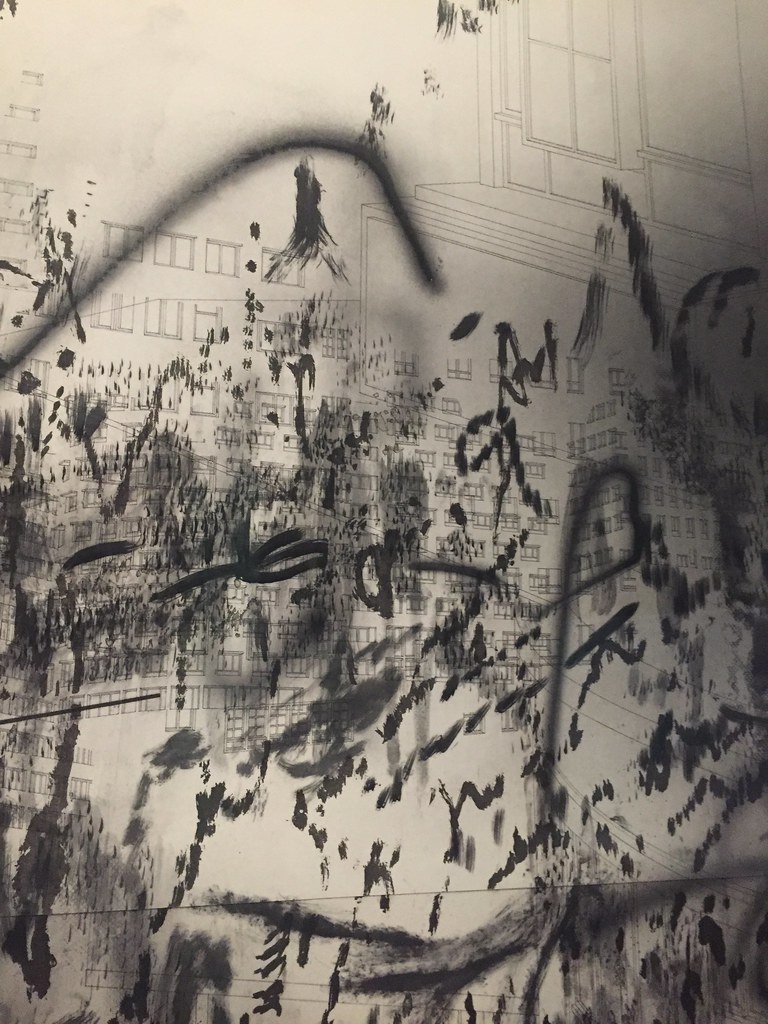Long Look: 'Epigraph: Damascus'

Title: Epigraph: Damascus
Artist: Julie Mehretu
Year Created: 2016
Artform: Etching
Materials: Photogravure, etching, aquatint
Surface: Paper
Dimensions: 5 panels, 6ft X 3ft
Gallery/Museum: Whitney Museum of American Art
Viewed: September 25, 2017
Sometimes life deposits us in a dark thicket.
This is my immediate response to Julie Mehretu’s six-panel etching and mixed media work. When I take a long look at a work, when I sit with it for awhile, I am always trying to get beyond what I think about a work, and as swiftly as possible into what I feel about a work.
It takes me much less time than usual with this work, because I immediately feel that I have passed through this neighborhood recently, this ruin, this trackless mess. Sometimes a work heals us with the light and beauty and coherence it radiates; other works of art heal us by speaking with rigor and precision about our lives – especially when our lives are a ruin. Such a work says to us: this might be a mess but you are not alone in it.
This is not to say the work is a mess – it is a high-fidelity picture of an inner or outer world that has been destroyed. I thought this even before I got up and looked at the gallery label. This is Damascus, a city in ruins after brutal bombardment.
Puerto Rico. Houston. Dominican Republic. Aleppo. Damascus. Our outer worlds, flattened, scrubbed off, destroyed.
One way I look at an abstract work is to think: this is not an abstract; it is a landscape. An inner landscape. And this work is just as effective as a view of a devastated inner world, reeds snapped off and blackened, soil heaped with ash and charred debris.
I read this work from left to right; chapters in a disaster.
Sometimes life deposits us in a dark thicket. The densest part always comes after we are already exhausted.

Epigraph: Damascus, Detail, Panel 4
There is no way.
No path, no road, nothing. Just destruction, rubble, in every direction.
Job, gone, family members, gone, dead, home, unrecognizable.
This is a work that functions differently at different scales; get up close to it and you will see that the paper is a light, elegant tracery depicting a modern city. In the first panel, the blackness threatens in a lowering sky. It is coming. Then the blackness arrives begins to scrub off and erase the city. Dwellings, human habitations replaced with human destruction, getting ever blacker until the third panel. In the final panel, the sky has begun to clear, and the bits of the city that remain emerge from the black cloud of destruction. But so much has been destroyed. So much.

Epigraph: Damascus, Detail, Panel 6
This is a work that speaks to the conditions of our world today: so many human beings in our world are in a non-metaphorical situation of total destruction, “no stone left standing upon another,” either from man-made or natural disasters (which we now know to be manmade after all). It is her “Guernica.” We suffer, we don’t know how to recover, recovery seems impossible or even pointless, where would we even begin? These disasters, both personal and universal, ask us the same question: if I’m not dead, now what do I do?